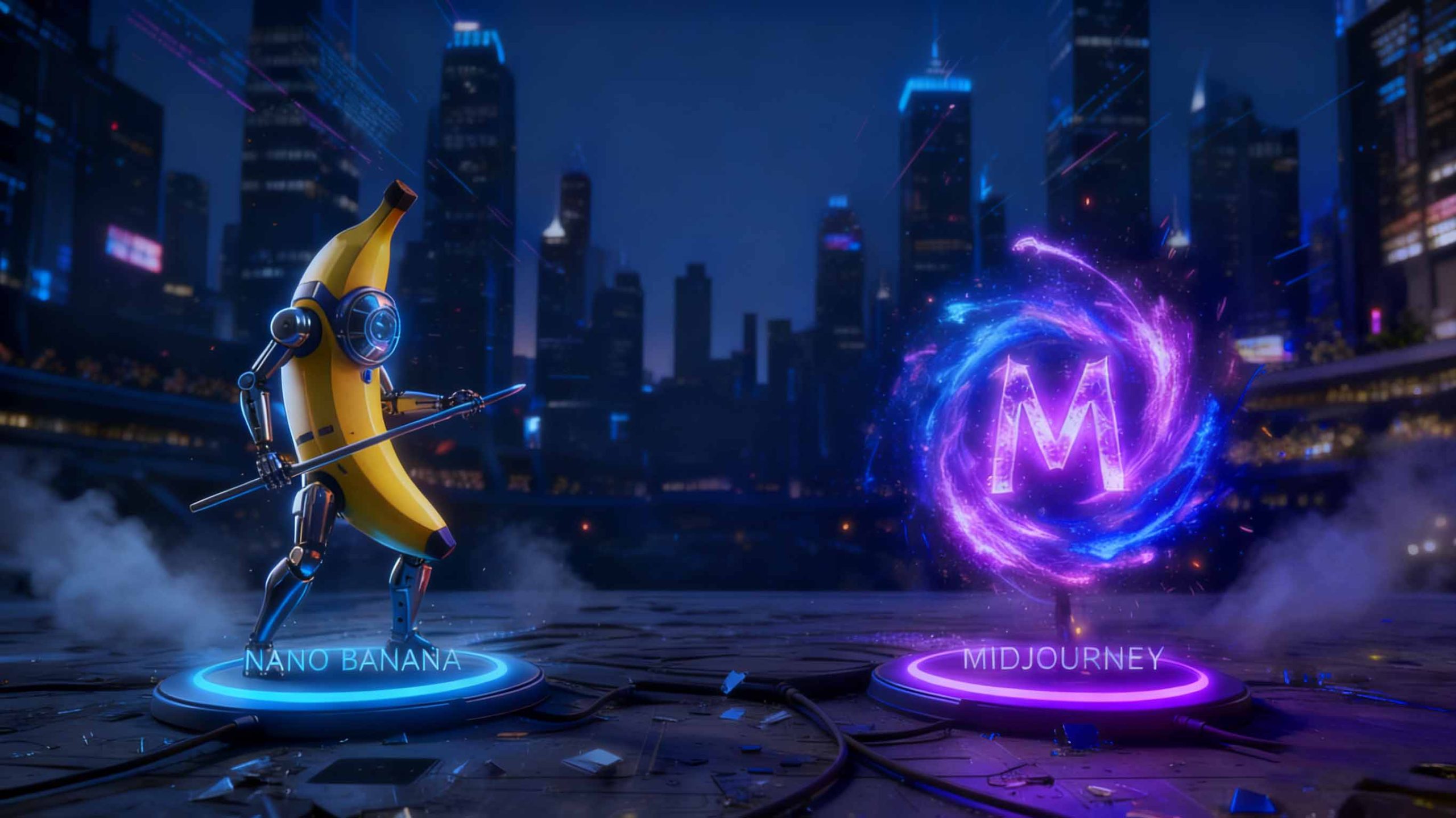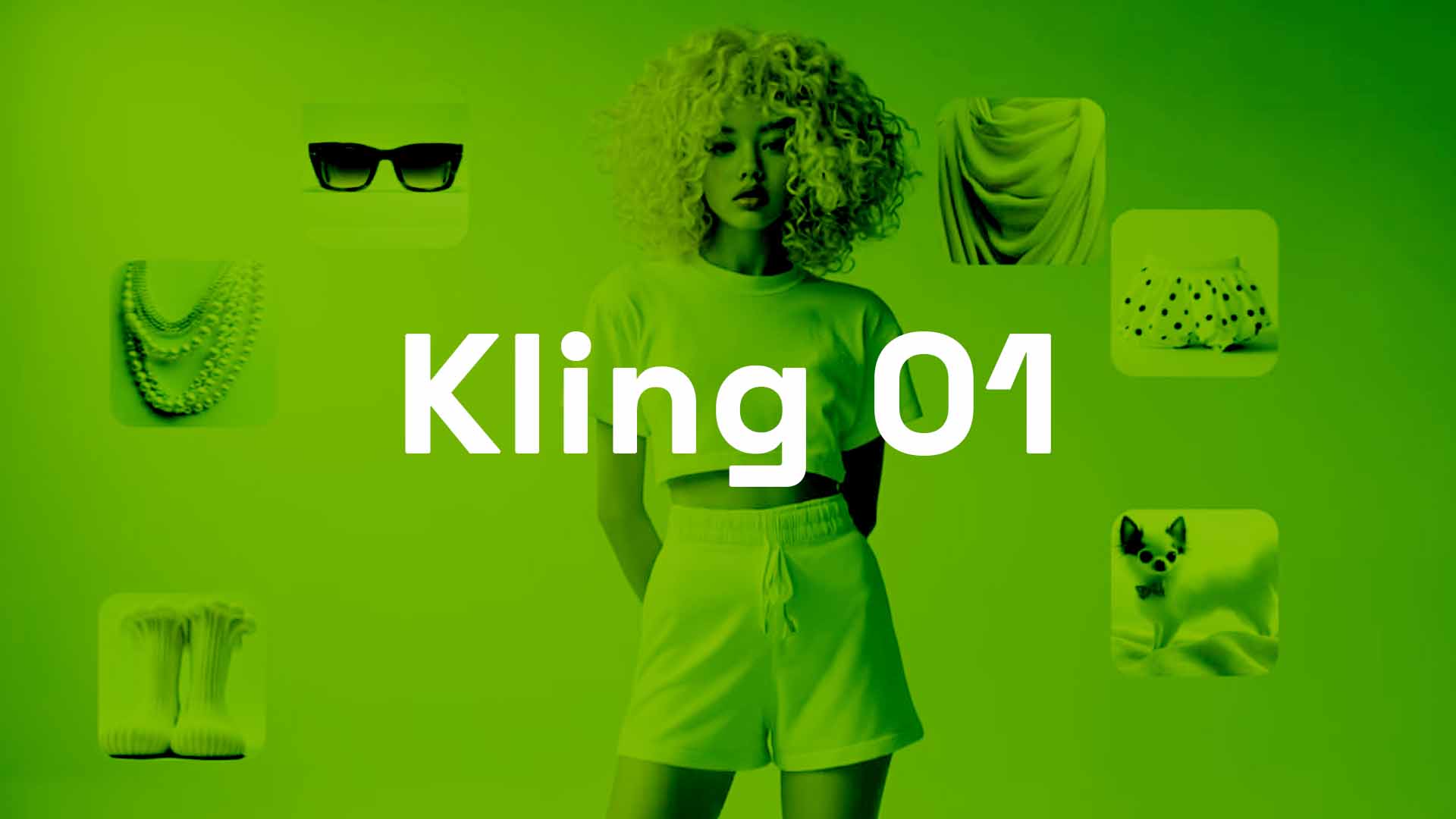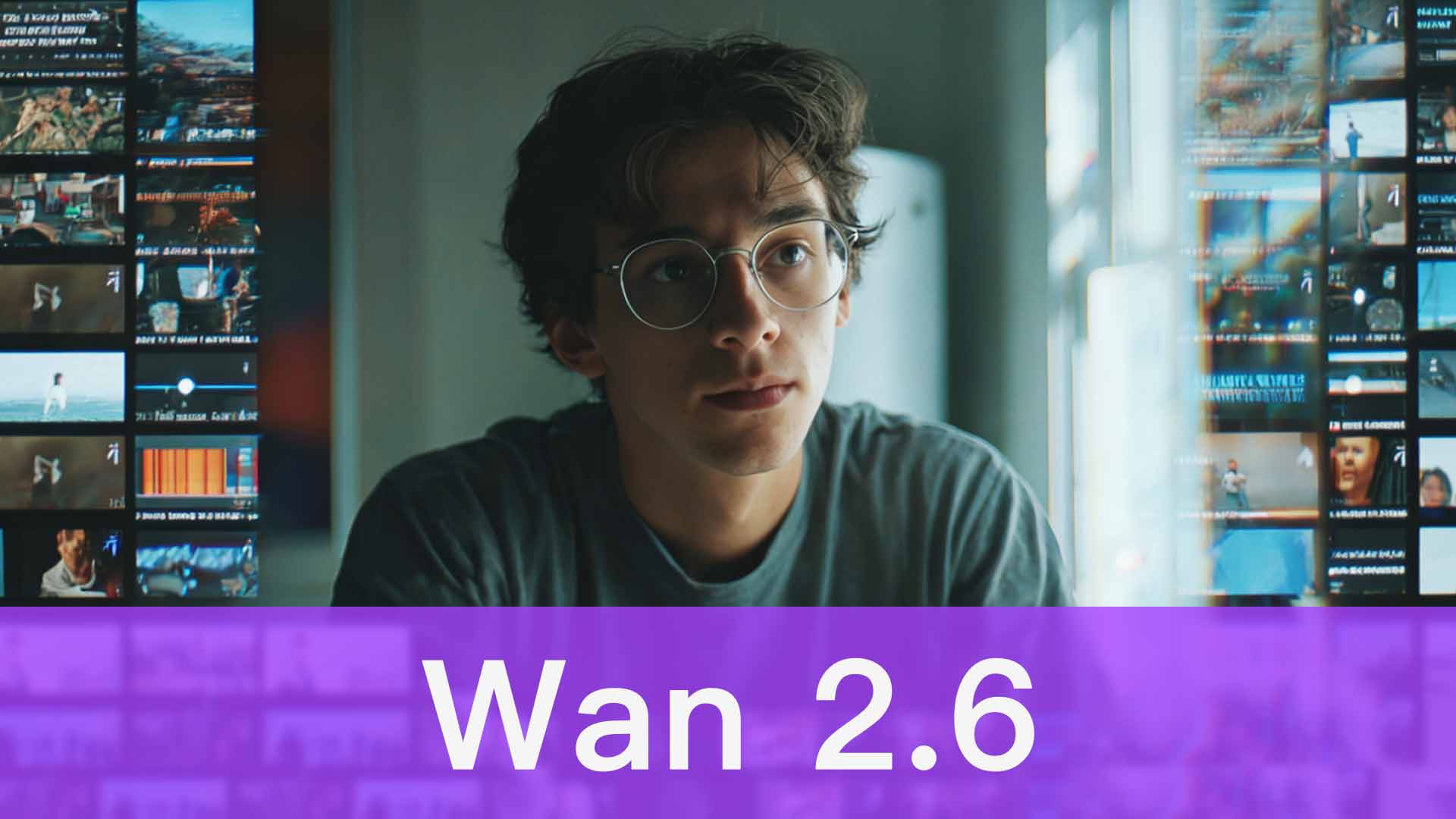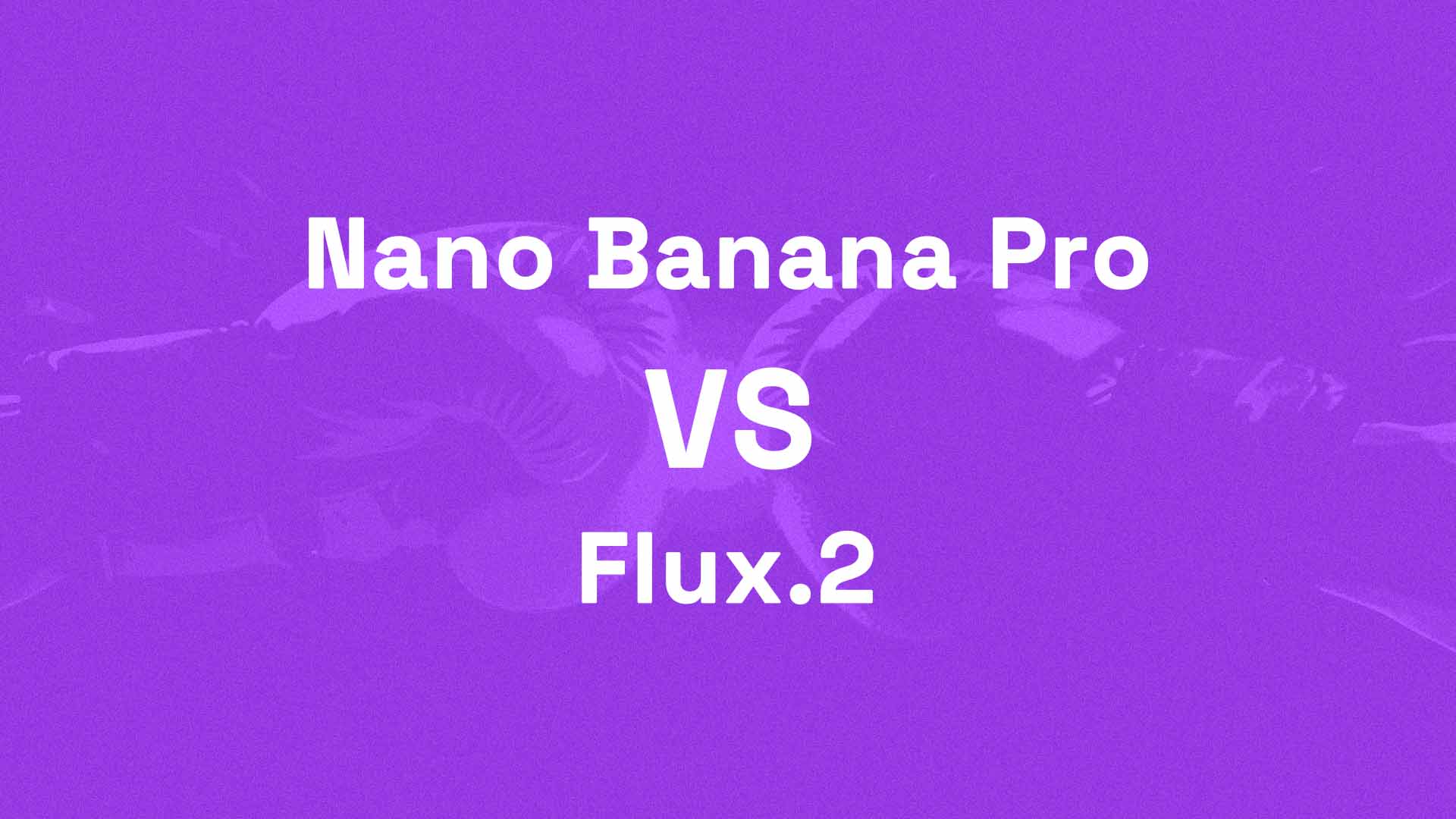Nano Banana AI delivers revolutionary text-to-image generation and editing with deep reasoning capabilities, outperforming competitors in accuracy, consistency, and spatial awareness.
AI image generation has exploded from novelty to core creative tooling in under three years. Two names you’ll see everywhere right now are Nano Banana (Google’s Gemini 2.5 Flash Image family, popularly nicknamed “Nano Banana”) and Midjourney. They target overlapping users — designers, marketers, agencies, developers — but come from different technical and business philosophies.
Below I make a single, practical, technical comparison so you can pick the right tool for your project.

Midjourney

Nano Banana
What is Nano Banana and what are its core features?
“Nano Banana” is the popular shorthand people use for Gemini 2.5 Flash Image, Google’s multimodal image generation and editing model that’s exposed via the API / Google AI Studio and Vertex AI. It was designed from the ground up to process text and images in a single unified step, enable conversational (multi-turn) image editing, maintain subject/character consistency across multiple outputs, and fuse multiple reference images into a single composed result.
Core features and technical differentiators
- Conversational image editing: Nano Banana is built to accept image + text instructions and perform context-aware edits (change clothing, pose, lighting, or blend multiple images into one coherent scene). It treats the editing session conversationally, preserving intent across multiple revisions.
- Multi-image composition & character consistency: the model is tuned to blend elements from several images while keeping consistent characters and lighting. Community resources and official docs highlight multi-image composition as a major focus.
- Iterative/agentic planning: recent reporting indicates Nano Banana 2 (and Gemini 2.5 workflows) plan images in stages, detect/repair artifacts, and perform corrective passes automatically — a move toward “AI as creative partner.”
- SynthID watermarking: images produced or edited with Gemini 2.5 Flash Image include an invisible SynthID watermark to signal “AI-generated,” which factors into provenance and compliance workflows.
What is Midjourney and what are its core features?
Midjourney is an independent research lab’s image-generation platform that rose to popularity for its distinctive aesthetic, powerful prompt controls and artist-friendly parameters. Historically accessed primarily via Discord (slash commands) and a web app, Midjourney evolved through multiple versions—V5, V6, and later V7—each improving text-to-image fidelity, prompt responsiveness, and toolset (Draft Mode, Omni Reference, etc.). Midjourney focuses on high-quality, stylized outputs and hands-on prompt-driven creativity.
Technical highlights
- Rich parameter control: Users can tune stylization, chaos, aspect ratio, seeds, upscaling, and more. Midjourney exposes many parameters for precise control of output aesthetics.
- Prompt power & remixing: strong parameterization and the ability to remix earlier generations (variations/upsamples) makes iterative creative workflows intuitive for designers.
- Versioning & tool modes: Midjourney’s versioning (now with V7 default) and modes (Draft/Turbo/Relax) let users balance quality vs cost vs speed depending on use case.
Table at a glance: Nano Banana vs Midjourney
| Dimension | Nano Banana (Gemini 2.5 Flash Image) | Midjourney (V7 + ecosystem) |
|---|---|---|
| Primary interface | Gemini app, Google AI Studio, Gemini API | Discord bot + Web console |
| Strength | Conversational image editing, multi-image composition, iterative self-correction | Stylized artistic outputs, strong prompt tuning, community features |
| Character consistency | High (designed for edits across images) | Good, but requires careful prompt / reference workflow |
| Provenance / watermark | SynthID invisible watermark for AI detection | No automatic invisible watermark (user metadata varies) |
| Best for | Photo editing workflows, app integration, API automation | Concept art, stylized images, designer ideation |
| Pricing model | API token pricing; consumer tiers via Gemini/Gemini Pro | Subscription tiers (Basic/Standard/Pro/Mega) |
How realistic are Nano Banana and Midjourney?
What “realism” means here
Realism refers to photoreal fidelity: plausible lighting, accurate anatomy/facial detail, natural textures, believable integration of generated content with an input photo (for edit workflows), and few synthetic artifacts.
Nano Banana (Gemini 2.5 Flash Image)
Nano Banana is explicitly engineered for photo editing and photoreal generation — the product messaging and early reviews emphasize targeted edits that preserve subject likeness, lighting, and context (change clothing, insert objects, colorize, etc.). Google also positions the model around “world knowledge” so generated elements fit semantically into scenes, which helps realism in object placement and plausible details. That design makes Nano Banana especially strong when you start from a real photo and want edits that remain believable.
Strengths:
- High fidelity on image-to-image edits (retouching, background/lighting fixes).
- Better tendency to preserve subject likeness across edits.
Known limits:
- Occasional subtle artifacts (faces can still look slightly synthetic in difficult lighting or extreme edits).
Midjourney (V7)
Midjourney V7 improved photorealism compared with earlier releases, but its historical strength remains stylized/artistically-rich output. V7 delivers stronger detail retention and more natural renders than prior versions, but Midjourney’s tradeoff is often aesthetic choices—painterly or cinematic looks that may emphasize mood over strict photo realism. For straight photoreal edits where preserving an original subject is critical, reviewers generally still place Midjourney behind dedicated image-edit-first models.
Strengths:
- Very strong at photoreal generation when prompted tightly, especially with upscaling/quality flags.
- Excellent at producing convincing textures and high-detail stylized photos.
Known limits:
- Less geared toward in-place, semantically constrained edits that must preserve an original person’s likeness across multiple steps.
Nano Banana vs Midjourney: Which is more consistent?
Defining consistency
Consistency covers two related things: (1) character/subject consistency across multiple edits or prompts (keeping the same face, outfit, proportions), and (2) deterministic reproducibility (ability to reproduce the same output given the same inputs and seeds).
Nano Banana: consistency strengths
Nano Banana’s core feature set emphasizes multi-image fusion and conversational editing — it’s designed to keep characters and scene context consistent across iterative prompts and image inputs. Because it operates as an image-edit-first, multimodal system, it better preserves identity and contextual invariants when you instruct repeated edits. This makes it the go-to for workflows that need consistent references (e.g., product shots, multi-scene storytelling with the same subject).
Practical implication: Use Nano Banana when you need to keep a single character’s appearance stable across many scenes or edits.
Midjourney: consistency profile
Midjourney can produce consistent visual styles and can reuse seeds/parameters for reproducibility, but keeping an identical character across multiple prompts often requires careful prompt engineering and reference images. The Discord-driven, generation-first workflow favors stylistic variety and exploration rather than strict identity preservation. V7 improved consistency relative to earlier versions, but the “creative” defaults still inject variation.
Practical implication: Use Midjourney when you want consistent style or mood across assets, but expect more work to guarantee exact character identity across many scenes.
Which is faster — Nano Banana or Midjourney?
What speed means
Speed here is both latency per request (how many seconds until a delivered image) and edit-loop responsiveness for iterative workflows (how quickly you can make a sequence of refined edits).
Nano Banana: low-latency, interactive editing
Google deliberately brands Gemini 2.5 as “Flash” and positions it for low-latency, interactive edits. Developer documentation and hands-on reviews report sub-30-second edit/response times for many workflows and highlight optimizations for conversational, iterative editing. The focus on in-place edits (image + prompt → quick edit) makes Nano Banana feel faster in real-world iterative sessions.
Midjourney: improved generation speed (V7), but different UX
Midjourney V7 introduced notable speed improvements in 2025 (newer modes like Turbo and optimizations to Fast mode). Real-world measures and community reports indicate generation windows commonly in the ~9–22 second range depending on mode, server load, and whether you’re using upscalers/variations. For bulk high-throughput generation, Midjourney can be fast — but its interaction model is generation-first rather than conversational-edit-first, which affects perceived responsiveness during iterative editing.
Pricing and accessibility — how do costs compare?
Nano Banana (Gemini 2.5 Flash Image)
Google lists token-based pricing for Gemini models. As a ballpark example derived from Google’s pricing docs, image output using Gemini 2.5 Flash Image is priced at ~$30 per 1M output tokens, and a typical 1024×1024 image consumes roughly 1,290 output tokens (≈ $0.039 per image at that rate). That makes per-image costs quite low for moderate volumes.
Midjourney
Midjourney uses subscription tiers (Basic / Standard / Pro / Mega) with differing amounts of “Fast GPU” time and features such as Stealth Mode (private generations) on higher tiers. Public pricing summaries (subject to change) put Basic around $10/month, Standard around $30/month, Pro around $60/month (or lower when billed annually), and Mega higher — with variations based on fast-time quotas and concurrency. If you need an embedded, automated API-style flow, you’ll need third-party services or custom engineering because Midjourney’s native access model is a subscription + Discord workflow.



